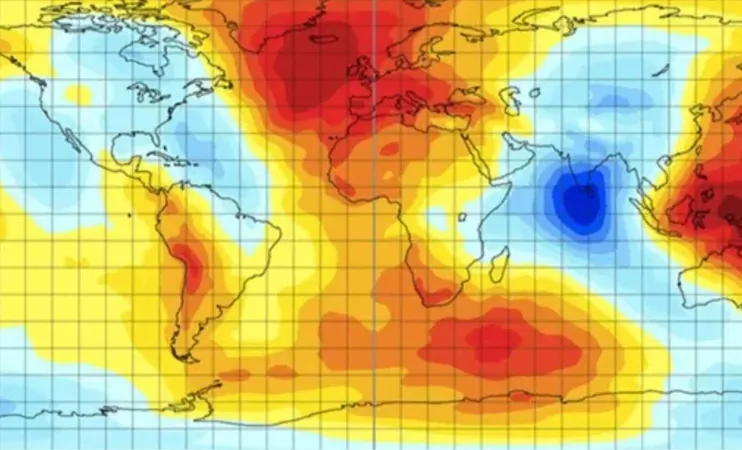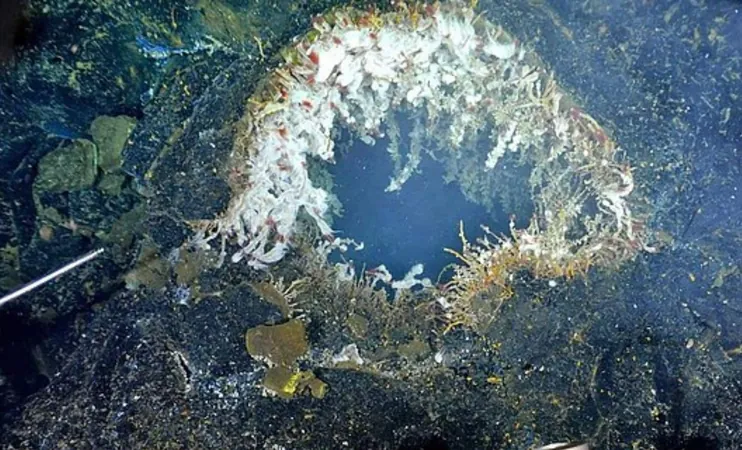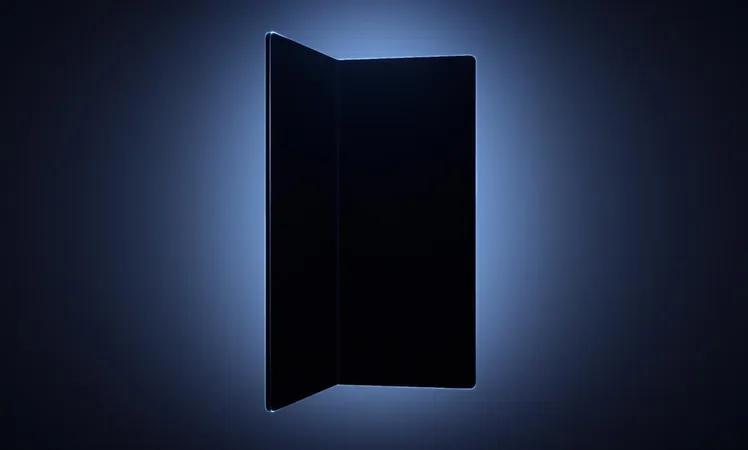
Unveiling the Mystery: A Stunning Gravity Anomaly in the Indian Ocean Could Change Everything
2025-05-08
Author: Chun
Beneath the Waves: The Indian Ocean Geoid Low
Deep beneath the Indian Ocean lies an astonishing gravitational anomaly that has baffled scientists for decades. Known as the Indian Ocean Geoid Low (IOGL), this enigmatic region sees the ocean surface dipping a staggering 106 meters below surrounding areas, creating one of the weakest gravitational forces on our planet. For years, the reason behind this phenomenon remained elusive—until groundbreaking research emerged from a recent study published in Geophysical Research Letters.
What Sets the Indian Ocean Geoid Low Apart?
The Indian Ocean Geoid Low is one of the most intriguing geophysical anomalies known to researchers. Unlike the majority of Earth's surface, influenced by tectonic movements and variations in mass, the IOGL presents a lower-than-expected gravitational pull. This peculiar characteristic has resulted in a section where sea levels are unusually depressed, defying all predictions and models for oceanic behavior.
Prof. Attreyee Ghosh from the Indian Institute of Science in Bangalore describes the IOGL as one of Earth's greatest enigmas: "It’s the lowest gravity anomaly on Earth, and until now, there has been no agreement on its origins." Over the years, various theories emerged—ranging from sinking tectonic plates to the complex processes within the Earth's mantle—yet none have fully explained the anomaly's incredible scale.
Decoding the Anomaly's Origins
Recent research has illuminated the roots of this gravitational mystery. Through advanced computer simulations and geodynamic models, scientists traced the IOGL's origins back 140 million years, linking these geological processes to the remarkable dynamics of the mantle.
The findings suggest that the anomaly stems from mantle convection—where material from the Earth’s interior rises toward the surface. Researchers believe that hot, low-density material, possibly linked to the African superplume—a massive upwelling of molten rock—fuels this anomaly.
Using seismic tomography data, scientists have identified a significant mass deficit in the upper to mid-mantle beneath the IOGL, where lighter, hotter material accumulates from depths of 300 km to 900 km below the ocean floor.
A Geological Odyssey Over Millions of Years
The history of this gravity anomaly goes back tens of millions of years. The Indian plate, now part of the subcontinent, was once part of a much larger supercontinent. Over the last 140 million years, as it drifted northward, it sealed off a once-vast ocean, leading to the subduction of the oceanic plate beneath it.
This tectonic transition spurred mantle plumes that pushed low-density material towards the surface, forming the gravity anomaly we observe. Prof. Ghosh adds, "This negative anomaly reflects a mass deficit within the deep mantle, explained by the presence of hotter, lighter material rising from below."
What Lies Ahead for the Gravity Hole?
As scientists contemplate the future of the Indian Ocean Geoid Low, questions arise about its longevity. This anomaly likely formed around 20 million years ago, a mere blip in geological time. Will it persist, or is it destined to fade away?
The ultimate destiny of the IOGL hinges on the ever-evolving interplay of plate tectonics and mantle dynamics. As Prof. Ghosh poignantly states, "This anomaly could last for an extraordinarily long period, or plate movements may eventually lead to its disappearance over the next hundreds of millions of years."
What we do know is that the IOGL not only adds to our understanding of Earth's geophysical landscape but also invites deeper exploration of the forces that shape our planet's evolution.



 Brasil (PT)
Brasil (PT)
 Canada (EN)
Canada (EN)
 Chile (ES)
Chile (ES)
 Česko (CS)
Česko (CS)
 대한민국 (KO)
대한민국 (KO)
 España (ES)
España (ES)
 France (FR)
France (FR)
 Hong Kong (EN)
Hong Kong (EN)
 Italia (IT)
Italia (IT)
 日本 (JA)
日本 (JA)
 Magyarország (HU)
Magyarország (HU)
 Norge (NO)
Norge (NO)
 Polska (PL)
Polska (PL)
 Schweiz (DE)
Schweiz (DE)
 Singapore (EN)
Singapore (EN)
 Sverige (SV)
Sverige (SV)
 Suomi (FI)
Suomi (FI)
 Türkiye (TR)
Türkiye (TR)
 الإمارات العربية المتحدة (AR)
الإمارات العربية المتحدة (AR)